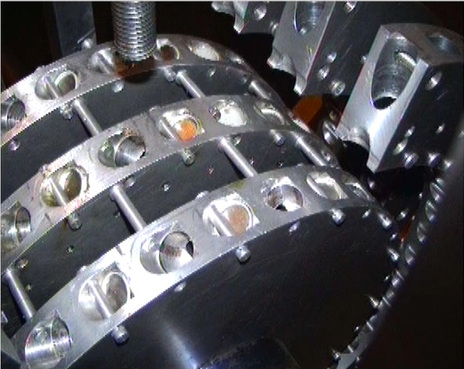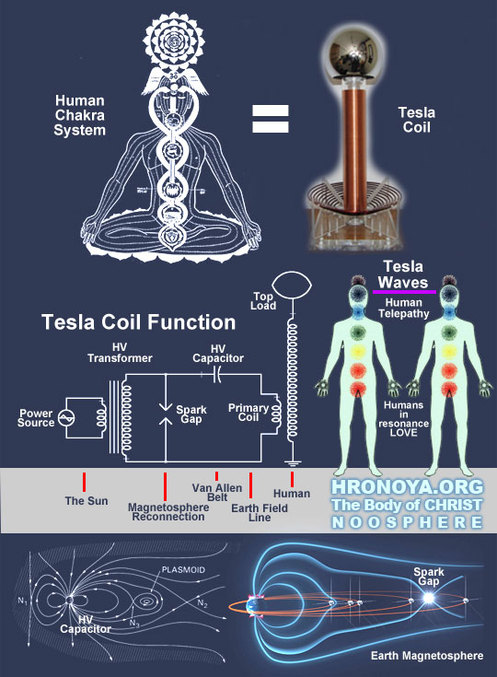 In this series of articles we examine several “Free Energy” devices and explain their workings in a very simplified way while discussing the proposed theories behind them. Also, we will take a look at the new inventors and researchers working within the Open Source Energy movement and how Internet collaboration has changed the face of invention… With selected interviews with some of the most important players in the movement today. The proposition is that there are many new devices being developed using clean, cheap, and limitless forms of energy to power them and that these devices may have the capability to change all our lives for the better. They are a new breed of electro-magnetic and magnetic motors and other devices that run on very little current, but which can provide both mechanical work and electrical output in excess to the energy that is put into them. Many of these fascinating inventions have been around for over 20 years now; and there are literally hundreds of patents on devices having such claims. A few, in 2008, are finally coming into the initial marketing, operational, and manufacturing stages. These highly varied inventions have three characteristics in common: They are all outside of the scientific mainstream, are rarely reported on by the media, and are lighting-rods for controversy and skepticism. A word about “Free Energy”, a “buzz word” which will come up often: This is a highly controversial term, even amongst those who believe it is possible to extract large and useful amounts of energy by unconventional means. The word “Free” could imply there is no cost and is somehow “magical”. That is not correct, perhaps “cheap” is a better term; and the well-documented science behind many of them certainly is not “magic”. These devices will of course cost money, and there will be significant limitations to their efficiency and effectiveness; especially until they are developed further. “Free” also pertains to the fact that they are all “pollution free”, using no external chemical fuels and often requiring much less electricity to operate than they output (or least being much more efficient than “traditional” means). But perhaps the most accurate use of the word “Free” would relate to the change in society that these inventions would bring: Freedom from the electrical grid and filling stations… Freedom from an economy built on “scarcity”…. And freedom from the need to pollute our planet to maintain a high level of civilization. These devices and principles may sound wildly optimistic, perhaps even too good to be true… And possibly they are. But please note, it is not the science behind them that is holding most of them back: It is the paradigm of the society in which we live that is stopping them from eventually becoming every-day home appliances, industrial processes, and utterly clean power sources. Magnetic Motors and Related Solid-State Devices Most of the new “magnetic motor” devices work by exploiting previously unexplored aspects of magnetism and/or inductance. By “thinking out of the box”, their inventors have managed to create devices that side-step, and even use for gain, the biggest problem that traditional electric motors face: What is commonly called “Back EMF” ; or more accurately, “Counter Electro-Magnetic Force”. CEMF is the counter-current that is produced by the rotation of a motor in a magnetic field, and is what has, up until now anyway, stopped motors from being truly efficient. The higher the rotation rate of the motor, the greater the CEMF opposing it: Creating a natural brake and barrier to true energy efficiency. What several inventors have done, is find clever ways to get around most or all of the CEMF; thereby greatly increasing the efficiency of the motor. As a bonus in some cases, excess electrical energy gained from the CEMF itself has been harnessed and taken out of the system as generated electrical power; besides the mechanical work being done by the turning motor shaft. For this reason, most of these devices would be more accurately termed “motor-generators”. It has been seen with the designs of some of these devices, that a rotor can be made to move and do useful work using little more than carefully placed magnets (or combinations of permanent magnets and precisely-pulsed electro-magnets). Other, more traditional designs utilize the principals of “Variable Reluctance” (changing the magnetic “resistance” within a motor during operation), to lower current draw greatly: Creating motors with efficiencies undreamed of before (as developed by Dr. Peter Lindemann and others). Some designs are complex hybrids of these technologies or others, such as electro-static energy. When these turning motor shafts are used to generate electricity, the result can be more total power outputted than was put in. Some of these devices have been reportedly made to be “self-runners”: Powering themselves from their own electrical output; creating self-contained “fuelless” electrical and/or torque generating systems…. Motors with the capability to run as long as their mechanical parts can last, without any external input of energy. Equally important and promising as the very high-efficiency or “free energy” magnetic motors; are new non-rotating devices that work via the interaction of inductance (specially designed coils and transformers), capacitance, and magnetism. Through clever manipulation of magnetic fields, useful electrical power can be extracted from these devices that exceeds the observed power that was put into them. Col. Tom Beardon’s device, the “M.E.G.”, is one such invention that is very well documented. It looks much like a transformer with large magnets attached… Yet it has been demonstrated successfully and repeatedly to produce more energy than it consumes. Perhaps another, much more controversial one, is now known famously in the Open Source Energy movement as the “TPU” (“Toroidal Power Unit”); a device shrouded in mystery which has become an urban legend due to the fantastic “You Tube” videos regarding it. The TPU is purported to be first developed by a California inventor named Steven Mark in the 1990’s; but Mr. Mark has since disappeared or gone into reclusion. Although the original TPU devices have all been lost, there is a large Internet cooperative project in the Open Source movement to reproduce it. The amazing thing about the TPU is, without any moving parts, a device weighing about 30 pounds could supposedly generate over 1,000 Watts of power; using only a small excitation circuit powered by a 9-volt battery (…this according to several witnesses, including reputable electronic engineers). Besides the impressive power output, the TPU was reported to have the very strange gyroscopic tendency of resisting physical movement of the device… It “pushed back” with resistance when moved; suggesting that a circular magnetic flux vortex was created within the toroidal (“doughnut”) shape when operating. It and the M.E.G. both appear to act as “motor-generators”; but with no moving parts. It is important to note that Col. Beardon’s M.E.G. is a verified working device; and the TPU is as yet unverified. These systems, whether solid-state or motive, often have what is called “COP > 1” (a “Coefficient Of Performance greater than One” also often called “Overunity”)… Meaning that they produce more energy than is observably put into them. Well, this is of course “impossible” under current scientific dogma and by the “Laws of Thermodynamics”: Until one considers that the form of energy these devices may be tapping into is not traditional or observable by ordinary means. The motive force is most often thought to be that illusive and seemingly “magical” form which is known by many names: Zero Point Energy (“ZPE”), Etheric Energy, Ergone, Energy from the Vacuum, Radiant Energy, and many others. It is energy that comes from the surrounding “ether”, or residing within the “quantum sea” of n-space if you prefer. Others believe in the case of some devices, that it is energy coming from the Earth’s magnetic field. This highly controversial subject (even among its proponents) has caused some uproar in past years. We have sometimes heard about a few highly publicized frauds; and their inventors’ or promoters’ wild claims made without any real proof to back them or even a working device prototype, for that matter. But this is inevitable with any new and rarely studied technology. The hand-full of frauds and honest but deluded dreamers have the unfortunate effect of clouding and tarring the entire subject… And they are often covered by the media while other legitimate and serious alternative energy devices are not. But it is important to note that by far the majority of these alternative energy devices are not frauds or unrequited dreams… Many of them have been duplicated, proven, and observed to work as promised by respected members of the scientific community… Producing cheap and clean energy “from the air” so to speak. Amazing? Incredible (literally..)? Perhaps…. But hundreds of legitimate scientists have now observed operation of these devices, and are forced to admit that there is indeed something unique going on here… Something that traditional science cannot easily explain without embracing new theories in Physics. And because of the Open Source Energy movement on the Internet, many independent researchers (garage tinkerers and shade-tree mechanics, would-be inventors, and electronics hobbyists) have duplicated these devices themselves with widely differing results. There are many, many designs for non-traditional “magnetic motors”; some that are simply more efficient than traditional types (but still with a COP <1), and some that exhibit “true overunity”. The Adams motor/generator is one such device; invented by the late brilliant New Zealand inventor Robert Adams. This fairly simple design lends itself well to reproduction, and is a favorite of home “Free Energy” electronic enthusiasts. Similar motor-generators using magnetism as the motive force were invented by Howard Johnson, Robert Teal, E.V. Gray, Joseph Newman, John Bedini, Paul Baumann, Bruce de Palma, Teruo Kawai, and Dr. Peter Lindemann. A few companies are now attempting to manufacture and market their overunity-claiming inventions, such as Lutec Ltd. of Australia, and the Steorn Group of Ireland. And in June 2008 ; a new 300 horse-power self-running magnetic engine using permanent magnet pistons called the “Magforce” was unveiled by a company in Korea; Shinyeon. Although very little is known of this device yet at the time of this writing, it appears to be on the fast-track for mass production… A true milestone in history if this happens. And there are many other inventors and their devices not mentioned here but which may be equally effective and valid. One of the most unique of these working motor-generators is the Testatika device, which is being developed by the Methernitha religious community located near Berne, Switzerland. The now-deceased inventor and leader of the commune, Paul Baumann, created a device that can generate electricity without any external fuel. It works on a principal of high static electrical charge created by a “Wimshurst”-type electrostatic generator (counter-rotating metal disks creating huge static charges), which is then converted into useful power using a unique collection of coils, capacitors, and other components. The commune is very insular and has no wish to market or advertise the machine. However, many outside witnesses including scientists and University professors, have visited and studied it; and none have so far claimed the Testatika does not work. Nearly all these magnetic motor devices share a design quirk: They are generally powered by a “Source” battery, and return energy into the system via one or more separate “Charge” batteries. This can make it a bit more difficult to measure the power in and out… Especially since the power coming out is unique and has strange effects on the batteries themselves. The energy generated from these devices is usually derived from DC pulses (“DC” meaning in this case unidirectional, positive-going only and not just “flat” direct current; as opposed to “AC” alternating current, which changes polarity each cycle). These DC fast “spikes” are usually of high frequency and voltage potentials. When batteries are charged via this pulsing method, they exhibit strange tendencies… Such as after long periods of time, inexplicably charging to higher voltages and amp-hour figures that are much greater than their published rating (…or that was previously thought possible). 12V batteries have been reported to eventually over long periods of time safely reach charges of over 30 Volts. These DC pulses were also soon found to have the serendipitous effect of “rejuvenating” old batteries that were “sulfated”: Meaning; that ions of oxygen sulfate had gradually covering the electrodes and eventually made the battery nearly “dead”; because the coating had greatly lessened the charge potential between the positive and negative plates. This coating of sulfate SO4 ions is by far the most common fate of older lead-acid batteries. Charging using these sharp pulses “de-sulfates” the batteries, and will return them to nearly “like-new” condition again. However, it is important to note here for the would-be experimenter that this technique can also be dangerous if misused; as over-voltaging a battery with pulses of too-high a voltage and/or too fast a repetitive frequency can cause it to possibly explode, crack and leak, and fume poisonous gas into the air (one should always charge batteries in a well-ventilated space immune to acid leak damage, and wear eye protection and gloves when handling them). Highly effective and very energy-efficient de-sulfating battery chargers (with safe, carefully limited spike potentials) are now hitting the market and will soon dominate the battery charging industry… As a direct result of the previous research done on free energy magnetic motors by inventor John Bedini and others. These “pulsers” can charge a battery at a fraction of the time and power used by traditional chargers, while “rejuvenating” it and greatly prolonging its life via de-sulfating. Also, oddly enough, batteries previously thought to be non-rechargeable such as disposable Alkaline types can often be successfully recharged when pulsed. De-sulfating is an important technology for Wind or Solar renewable energy systems; where the large and expensive deep-cycle battery banks needed for “off-grid” operation benefit greatly. So far de-sulfating chargers are one of the very few inventions from the free energy sector to successfully make it into the mainstream… But it won’t be the last to do so; if the Open Source Energy movement has any say in the matter. The “spike” pulses coming off of these unique motors have other interesting effects and characteristics besides battery charging. They are often termed what is known as “cold electricity” or exhibiting “Negative Resistance”…. Meaning that this form of power does not act as “normal” electron charge-sourced electricity does. Devices utilizing it will typically not heat-up as usual; and if arcing occurs via shorting or spark-gaps, the sparks appear long and tenuous, bright in the infra-red spectrum and somewhat like lightening…. Totally different than “normal” electricity arcs. Plus, the current path of this energy does not always conform to regular electrical laws and formulas: “Counter-currents” can reside within the same wire… power flowing in two or more directions simultaneously. In fact, this “cold energy” has been termed as not actually flowing through the wire; but rather traveling along its surface. The voltage spikes, created either as electronically-generated pulses or as artifacts from mechanical switching (“noisy” transient spikes generated by a mechanical switch’s movement across the contacts), are thought to act as the triggering and receiving mechanism for “zero-point” or “cold” energy. It appears that most free energy electrical devices share this characteristic: The “excess” energy seen in the system is caused by the near-instantaneous collapsing field of the large DC spike pulses. It is as if the pulse opens a fleeting window (only microseconds in duration), where “free energy” is then allowed to enter the circuit. These oddities are also why batteries or very large capacitors are so often used to collect the pulse energy; to more easily convert it into a useful form. The phenomenon of high-frequency pulses supplying excess energy into a circuit was first observed by Nikola Tesla in the 1890’s. Tesla is the undisputed “Godfather” and beloved hero of the Open Source energy movement, and was the inspiration for many inventors. He had several hundred patents to his name, and while working for Westinghouse, was the prime inventor of the AC power generation and transmission system that is still being used today by all our electric companies. But once Tesla began studying radiant energy, he left behind all work in AC generation; convinced that “energy from the ether” (radiant energy) was the proper answer for society’s energy needs. By 1905, Tesla had built a giant antenna tower array at Wardenclyffe on Long Island, NY… Which was reported to be designed to conduit, transform, and transmit radiant energy power to millions of people through the air and ground… Without any wires. When his main financer, J.P. Morgan, realized what Tesla intended to do with the huge tower, he quickly closed the project down, famously asking: “Where do we put the meter?” To Morgan’s way of thinking, radiant energy was not commercially viable because the supplier could not reliably bill the customer. Whether Tesla’s Wardenclyffe system would have actually worked or not, we may never know. However, Tesla did do other related experiments in the countryside near Colorado Springs, CO; and according to reliable witnesses, transmitted power through the ground: Lighting incandescent light bulbs from simple grounding stakes miles away from the power source…. Again, without any wires. Although Wardenclyffe was thought to be for transmitting electromagnetic waves, it was likely really using another principal altogether: Under the huge structure, there was an extensive network of buried antenna. Between the tower and these ground antenna, power was supposed to be sent out as a “pressure” front that Tesla likened to a water pump. He imagined receiving receptacles all around the planet in homes and businesses acting like “pressure gauges”; reacting to this electrical “pressure” and receiving power without significantly lessening it. He also stated that these pressure waves were instantaneous, and not governed by the speed of light. Was he right? He certainly was about hundreds of other devices he invented. J.P. Morgan’s influence helped insure that the world may never know this answer. The Strange Case of the Destroyed Dipole An important concept to understanding certain aspects of free energy is the theory of “The Destroyed Dipole”. This school of thought states that all traditional circuits are designed incorrectly…. That the energy used in them is wasted to Ground in a closed loop (“destroying the dipole”), instead of being “reused” efficiently over and over again by use of an “open-loop” circuit where there is very little traditional current flow: Powered by voltage potential and zero-point/radiant energy alone. A “Dipole” could be described as two opposite-charged poles with a voltage potential between them. Batteries are a prime example of a dipole device; or the two leads of a charged capacitor in a DC circuit (but note, capacitors act much differently in an AC-powered circuit than in DC). Imagine a capacitor in a DC circuit: It charges up without using any significant power; like a short-term “battery”, but without the current usage needed to charge it because it is essentially an open circuit with no current flow. Then, this “cap” will hold the charge (equal to the source voltage of the circuit), without using any significant power. There may be micro-amperes of loss caused by leaks in the cap’s dielectric, but it is insignificant. In a constant-voltage DC circuit, the charging of a capacitor is essentially “free” energy… It is the voltage potential rising within the cap to match its circuit’s potential… Without electrical current actually flowing through it. It will just sit there, holding voltage potential without spending any significant power. Yet, that potential charge can do work: One can take the charged capacitor physically out of the circuit, and discharge it by shorting it across the leads and creating a big spark (often hot enough to melt the metal tip of a screw driver), or use it to run a small load for a few seconds as it rapidly discharges. Then, when the capacitor is replaced back into the circuit and charged again “for free”, the cycle can continue: All without spending any significant amounts of energy. The original voltage potential remains the same, and since there was no current flow to ground, there was no power “Wattage” used. This is very much a rough simplification of the complex theory behind the Destroyed Dipole concept: That we could, like the charged capacitor taken momentarily out of a circuit and discharged, use energy to do work… Yet not lose that same source’s potential to do more work. It is an eye-opening and revolutionary concept… And it could prove to be the most important scientific leap of… The early 1900’s. For one of Nikola Tesla’s greatest yet least-known discoveries was that there is no need to have a closed-loop circuit, shunting all the power to ground… That motors and other devices can be run essentially like a charging capacitor: Powered by the “pressure” of the voltage potential; without the wasteful need to shunt flowing current to ground and “destroying the dipole”. The energy potential of the voltage source could be re-used, over and over again: Meaning that every major electrical system in use to day may be hopelessly flawed, and tragically inefficient! Ask an electronics college professor: “Why does a capacitor work the way it does?” They cannot give you a meaningful answer; regarding a common device used in virtually every electrical and electronic circuit. They can fully describe and predict their characteristics under nearly any circumstance (coming from over 200 years of empirical observation and using mathematics), but there are no laws or theories accepted by mainstream science fully describing why a capacitor does what it is observed to do. The “Mutable” Laws of Thermodynamics and Electron Charge It is interesting to note that up until the 1970’s; electricity was thought and talked about using the term “Electron Charge Theory”. Since then, the “Theory” part was mostly dropped: It is now generally assumed to be “law”. And this comes with all the dogma and rigid thought patterns associated with the term “law”, be it religious or social. However, their “laws”, certainly including the “first commandment of the religion of physical science” (the First Law of Thermodynamics), have been found to be conspicuously flawed… And they are being “bent’ or broken every day by familiar household devices. The first Law of Thermodynamics, cornerstone of the Conservation of Energy Theory, states that “energy cannot be created or destroyed”. And this is taught to mean that there is no way to get more energy out of a system than is observably put in to it. Although there may be much truth in it, the 140-year old law does not take into account other sources of energy that are not observable (or even the existence of atoms, for that matter). However, even when viewing traditional “observable” energy sources; the First Law may be still regularly broken. Heat Pumps (…refrigerators and air conditioners are “heat pump” devices that use the energy created by temperature differentials) can exhibit a COP of “3” or more. If the temperature differentials were greater, such as utilizing the static 55-degree F heat 10 feet underground beneath a house, and/or solar water heating panels mounted on roof-tops… Then this COP number could be much higher, and these devices could then be designed to be self-powered (thus eliminating the greatest single user of electrical grid power for home and office). It could be argued, that although the energy coming from the heat differential is “free”, it is still “solar-generated”; in that the air has been ultimately heated by the sun and thus observable energy added into the system. But there is another device, often found in the home garage, that is a more striking and less arguable “scoff law”: The air compressor. Inventors discovered back in the late 1800’s that compressing air, and then using the heat that is generated by the compressing to help self-run the compressor (as well as the potential energy of the compressed air itself), will give a COP of well over 1 . When air is compressed, heat is always generated… And this has nothing to do with solar action. In common use this heat is just wasted: But it still exists as fact…. And when the energy of the heat is added to the potential energy of the compressed air, the First Law is flaunted. Also, when the compressed air is used to power a device such as an air wrench, the dispersed air that is released is cooler than the ambient temperature. This thermal imbalance is also added energy to the system. Whether the heated or cooled air is easily utilized energy or not is a moot issue when considering the validity of the First Law. In the case of the scoff-law air compressor; it is the Law that is “busted”, not the law-breaker. Several fascinating devices and vehicles have used this concept, going back to the 1880’s. Railway locomotives powered by compressed air and using sophisticated double- and triple expansion engines were used in mines and cities. Many automobiles powered by compressed air have been built throughout the years; some with specialized motors, others using converted internal combustion engines. Perhaps the most interesting thing about these devices is that there are several intriguing ways to help compress air while under motion, making the air supply last much longer. The dream is to make them completely self-powered…. In theory at least, this appears possible. The point being that the First Law of Thermodynamics is wrong in some circumstances… But once a law has been broken; good scientific practice dictates that the theory behind it must be re-evaluated. This is just not happening in modern mainstream science. Perhaps because if it was, then other forms of energy not currently accepted, and the inventions that operate by them, would be more difficult to deny and ridicule. The Internet and the New Open Source Energy Movement All across the world, people are now using the Internet to collaborate and share information on their free energy inventions in ways Nikola Tesla could have only dreamed of. In some of the sites linked at the end of this article, one can explore many free energy devices, and read detailed reports from those who have actually built them. Below is a recent interview with Stefan Hartmann, owner of the www.Overunity.com website, which is dedicated to furthering the development of free energy devices through the Open Source model. On the Overunity forums as well as several other similar sites on the Internet, would-be inventors and hobbyists can exchange helpful information and work together to design and build free energy devices (as well as more traditional highly energy-efficient ones). Overunity.com has offered a large cash prize for the first inventor to provide a working prototype of a device with COP >1 (greater than 100% energy efficiency)…. So far with no successful takers. Mr. Hartmann is a graduate of the Technical University of Berlin, Germany; and a resident of that city.... TO READ THE TRANSCRIPT OF THIS INTERVIEW, AND TO SEE THIS ORIGINAL ARTICLE, CLICK HERE ...The Open Source Energy movement is certainly not a perfect solution… That would be more along the lines of universities and independent laboratories openly studying these devices and developing them much sooner than the resource-limited internet researchers can. However, this is not happening. So the slow, painful, and sometimes even blundering methods used by the home inventors will have to suffice for now. Yet, despite setbacks, some important work is being done by these unnamed, unsung heroes of the free energy cause. And one never knows: Tomorrow could bring the significant breakthrough. Perhaps if our political leaders embraced the idea of the possibility of cheap and abundant energy, then something positive will happen in the future…. But when one “follows the money” and examines who will lose greatly from the widespread use of free energy, this is unlikely to happen any time soon unless major political change happens first. So perhaps the Open Source Energy movement will prove to be our best chance to gain new hope for the planet: Where cheap, clean, and abundant energy will one day slay the three-headed demon of poverty, war, and hunger… Once and for all. Posted by Zach Royer | 7:55 PM HAST | April 11th, 2011 | Please Share This Article! Suggested links:
The Overunity forums; where internet inventors share their projects. http://www.overunity.com Dr. Peter Lindemann’s site, great source of information and the place to buy his excellent DVD’s and books on new motor design and free energy: They are a requirement to truly understanding this subject! http://www.free-energy.ws The Panacea-BOCAF site… Dedicated to the Open Source Energy movement. A great resource with tons of useful info: http://www.panacea-bocaf.org Col. Tom Beardon’s excellent site; the most comprehensive available for the new physics theories explaining free energy principals, as well as listings of many inventions: http://www.cheniere.org The Pure Energy Systems main page; great source of general information and news. Video of the new Korean “Magforce” magnetic piston engine can be seen here: http://peswiki.com Inventor John Bedini’s website, a major source for understanding magnetic motors, and his pulsing, de-sulfating battery chargers: http://www.icehouse.net/john34/ Rex Research. A top resource for free energy devices: http://www.rexresearch.com Keeleynet.. Interesting font of info on hundreds of inventions, some of them more amusing than practical! But overall, a great source: http://www.keelynet.com Air Car Access, a great site for exploring the wonders of compressed air and the many inventions that have utilized it. An often over-looked subject that has great promise for free energy: http://www.aircaraccess.com http://www.facebook.com/group.php?gid=55551307954
0 Comments
Your comment will be posted after it is approved.
Leave a Reply. |
News Watch
Mind-opening news articles, editorials, videos & apparel that inspire our readers and help liberate them from the status quo. Stay informed.
Write For UsSpace WatchTop NewsNews Watch Categories
All
|
|
|
HAVE A TIP OR STORY TO TELL? JOIN TODAY & SHARE YOUR STORY!
If you have a breaking news tip or idea, please email: [email protected] Apparently Apparel® is a registered trade name and part of the ZOAT International® brands network. © 2007-2023. All Rights Reserved. Privacy Policy. All art & news content posted on this site is commentary or opinion and is protected under Free Speech. ApparentlyApparel.com is not responsible for content written by contributing artists, authors or news feeds. The information on this site is provided for educational and entertainment purposes only. It is not intended as a substitute for professional advice of any kind. ApparentlyApparel.com assumes no responsibility for the use or misuse of this material.
|
|












